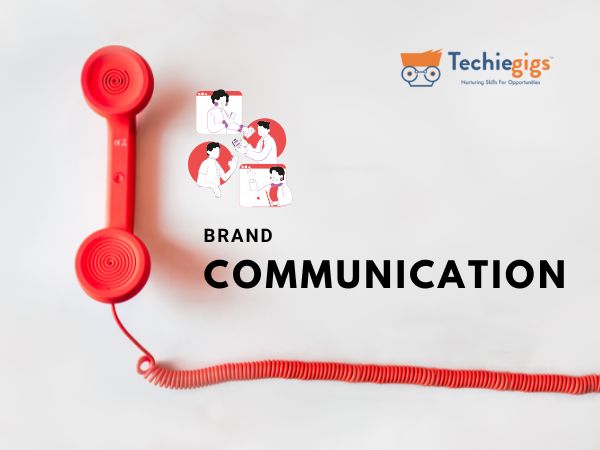The Strategic Brand Management Process: A Blueprint for Brand Success
In today’s highly competitive market, businesses aren’t just selling products or services; they’re selling experiences, emotions, and trust. At the heart of it all lies one powerful concept—strategic brand management process. It is not merely about designing logos or catchy slogans; it’s a comprehensive and dynamic approach that ensures your brand resonates deeply with your target audience while consistently delivering value.
In this blog, we will explore the strategic brand management process, its essential components, and how implementing it effectively can elevate your brand to unparalleled heights. Whether you’re a startup founder, a marketer, or an established business leader, this guide will provide actionable insights to build and sustain a brand that stands the test of time.
Table of Content
What Is the Strategic Brand Management Process?

The process is a structured approach to creating, maintaining, and growing a brand’s equity. It involves defining a brand’s identity, crafting strategies to build and sustain brand value, and continuously monitoring and adapting to changes in the marketplace.
The ultimate goal is not just recognition but a deep connection with your audience—building loyalty and ensuring that your brand becomes synonymous with trust and quality in their minds.
Why Is the Strategic Brand Management Process Essential?
Before diving into the steps, let’s understand why this process is vital for businesses:
- Establishes a Strong Brand Identity: A clear and consistent brand identity helps businesses differentiate themselves in a crowded marketplace.
- Builds Brand Loyalty: A well-managed brand fosters trust, leading to customer retention and advocacy.
- Increases Brand Equity: Brands with strong equity enjoy higher perceived value, allowing them to command premium pricing and expand into new markets.
- Adapts to Market Changes: The process ensures that your brand remains relevant and competitive by evolving with market trends and consumer preferences.
The Key Steps of the Strategic Brand Management Process
1. Brand Positioning: The Foundation
The first step in the process is defining where your brand fits in the market. This involves understanding your target audience, analyzing competitors, and identifying your unique value proposition (UVP).
How to do it:
- Conduct in-depth market research to identify audience needs, preferences, and pain points.
- Analyze competitors to find gaps or opportunities in the market.
- Develop a UVP that clearly communicates why your brand is the best choice.
Pro Tip: Use tools like SWOT analysis to define your brand’s strengths, weaknesses, opportunities, and threats.
2. Building Brand Identity: Crafting the Persona

Your brand identity is how you present yourself to the world. It encompasses your brand name, logo, tagline, tone of voice, and even the emotions your brand evokes.
Steps to Build a Strong Identity:
- Design a memorable logo and consistent visual elements that reflect your brand’s essence.
- Craft a compelling brand story that resonates emotionally with your audience.
- Define your brand’s tone of voice—be it professional, casual, or aspirational.
Pro Tip: Ensure consistency across all platforms to create a unified brand experience.
3. Brand Awareness: Spreading the Word
A great brand is of little value if no one knows about it. The next step in this process is building awareness. This involves using the right channels and tactics to reach your target audience effectively.
How to Build Awareness:
- Leverage digital marketing strategies like SEO, social media, and email marketing.
- Partner with influencers or collaborate with complementary brands.
- Utilize storytelling to connect emotionally with your audience.
Pro Tip: Invest in creating shareable content that highlights your brand values and mission.
4. Brand Equity: Creating Value
Building brand equity means ensuring your brand is perceived as valuable, trustworthy, and reliable. High brand equity translates into customer loyalty and increased profitability.
Steps to Build Equity:
- Deliver consistent, high-quality products or services.
- Provide exceptional customer experiences at every touchpoint.
- Regularly engage with your audience to foster a sense of community.
Pro Tip: Use customer feedback to continuously refine your offerings.
5. Brand Communication: Consistency Is Key

Clear and consistent communication is critical to reinforcing your brand message. This involves choosing the right messaging strategies and ensuring that every interaction aligns with your brand’s core values.
Effective Communication Tactics:
- Develop a brand communication plan outlining key messages, platforms, and campaigns.
- Train employees to embody the brand’s values in their interactions.
- Use storytelling and visuals to reinforce your brand identity.
Pro Tip: Personalize your communication to make it more impactful.
6. Monitoring and Adapting: Staying Relevant
The market is dynamic, and so are consumer expectations. Regularly monitoring your brand’s performance and making necessary adjustments is a crucial part of the strategic brand management process.
How to Monitor Effectively:
- Use analytics tools to track brand performance metrics like awareness, loyalty, and equity.
- Conduct periodic brand audits to identify areas for improvement.
- Stay updated on industry trends and adapt your strategies accordingly.
Pro Tip: Set up a feedback loop with customers to gauge their perceptions and needs.
Examples of Successful Strategic Brand Management
Let’s look at two brands that have mastered the strategic brand management process:
- Apple: Known for its consistent branding, innovative products, and exceptional customer experience, Apple has built unparalleled brand equity.
- Nike: Through its inspiring storytelling, iconic logo, and commitment to quality, Nike has created a brand that is synonymous with excellence and motivation.
The Role of Digital Marketing in Strategic Brand Management
In today’s digital-first world, the strategic brand management process is incomplete without leveraging digital marketing. From building awareness through social media to nurturing customer relationships via email campaigns, digital platforms offer endless opportunities to enhance brand value.
Key Digital Strategies:
- Optimize your website for SEO to increase visibility.
- Use data analytics to personalize marketing campaigns.
- Engage with your audience through interactive content like polls, quizzes, and live sessions.
Mastering the strategic brand management process is not a one-time effort; it’s an ongoing journey that requires commitment, creativity, and adaptability. By following the steps outlined above, you can build a brand that not only stands out but also thrives in today’s competitive landscape.
Ready to take your brand to the next level? At Techiegigs, we specialize in empowering businesses with cutting-edge digital marketing strategies and brand management solutions. Whether you’re starting from scratch or looking to refine your approach, our team of experts is here to guide you every step of the way.

